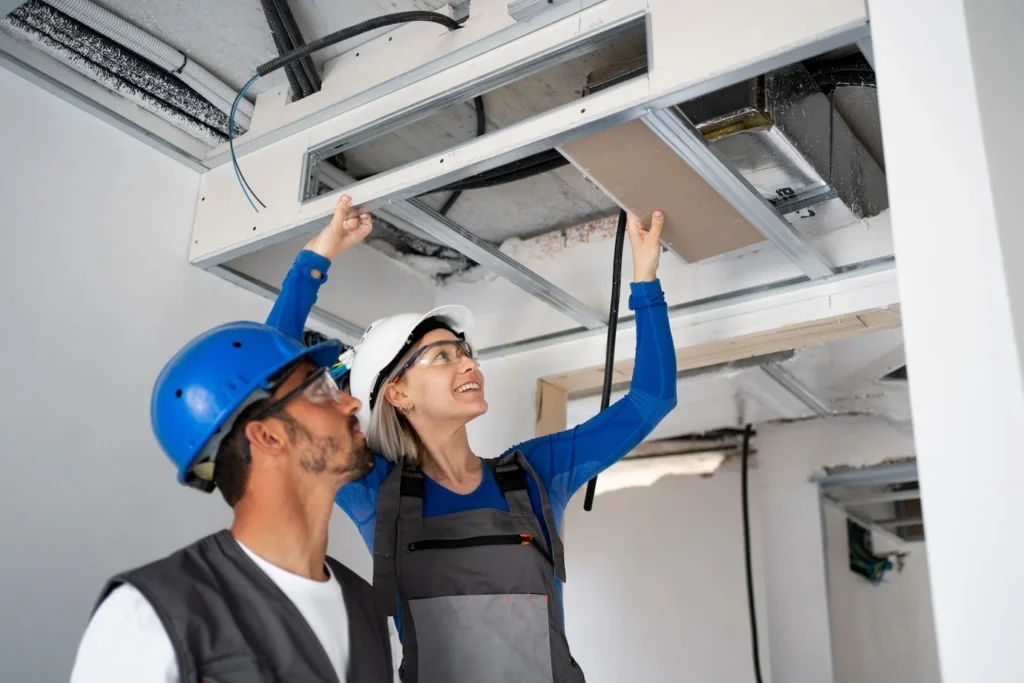When a home undergoes expansion—whether it’s a sunroom, guest suite, or bonus space over the garage—the existing HVAC system may not be equipped to handle the new configuration. These additions often disrupt the airflow balance that was originally calculated for the house, creating zones that feel too hot in the summer or too cold in the winter. Many homeowners assume that simply extending ductwork into the new area will suffice, but without proper assessment, this can lead to uneven air distribution and strain on the system. The issue lies in how air pressure, duct length, insulation, and return air paths interact in a changed layout. Without recalculating load demands and airflow requirements, the HVAC system can become inefficient or overworked. Contractors must evaluate the addition not just as extra square footage, but as a shift in how the home breathes, balancing air supply and return to maintain comfort across every room.
Understanding Why Additions Disrupt Airflow
Redesigning Ductwork to Maintain Balance
Addressing airflow problems in a home with an addition often requires rethinking the entire duct system. It’s not just about extending an existing vent into the new space—contractors must assess the static pressure, velocity, and routing of the airflow. Older systems may lack the capacity to serve the additional area without sacrificing performance elsewhere. This is where manual J, D, and S calculations become critical. Contractors measure heat gain and loss to determine if the system is appropriately sized for the increased demand. If the current unit is too small, adding new ducts may reduce airflow to existing rooms, creating discomfort throughout the home. One effective solution is to create a dedicated duct run with its damper system, allowing precise control over how much air reaches the addition. In some cases, it’s more efficient to install a mini-split system to heat and cool the new space independently. Professionals like Air Docs Heating & Cooling in Sebastian often use this strategy when additions don’t align easily with the original duct network. This approach reduces strain on the existing HVAC system while providing direct climate control where it’s needed most.
Zoning Systems and Their Role in Comfort Management
When a home grows beyond its original boundaries, zoning becomes one of the most effective tools to ensure comfort. A zoning system divides a home into distinct areas, each with its own thermostat and damper control. This allows the HVAC system to distribute air based on specific needs rather than a one-size-fits-all approach. For homes with additions, zoning is particularly useful because the thermal characteristics of a new room may differ significantly from the rest of the house. Sunrooms, for instance, often have more windows and different insulation levels, meaning they heat and cool at different rates. Zoning allows homeowners to tailor airflow without disrupting the comfort of other areas. Contractors often install electronic dampers that open or close based on the thermostat reading in each zone, automatically redirecting airflow to where it is needed most. This not only improves comfort but also boosts energy efficiency by reducing unnecessary conditioning in areas that don’t need it.
Evaluating Return Air Needs in Expanded Spaces
A commonly overlooked factor in airflow problems is the return air system. Supply vents push conditioned air into rooms, but it’s the return vents that complete the circulation loop. When an addition is built, if no adequate return path is included, the space may feel stuffy or imbalanced. The pressure builds up in the room, making it difficult for conditioned air to move freely, which can even push air back into the ducts and disrupt performance in other parts of the home. Contractors assess whether existing return air capacity can accommodate the additional airflow demands or if new return vents need to be installed. In some cases, a jump duct or transfer grille is used to facilitate air movement back to the return plenum without the need for extensive ductwork. Ensuring a proper balance between supply and return air is one of the most crucial aspects of maintaining comfort in homes that have been expanded.
Blending Smart Technology with HVAC Adjustments
Modern HVAC contractors are increasingly integrating smart home technology to enhance system performance in homes with additions. Smart thermostats, duct sensors, and airflow monitors provide real-time data that helps fine-tune system behavior. In homes with multiple zones or additions, these devices can detect when airflow is insufficient or when temperature swings occur too rapidly, assisting contractors to diagnose issues that would otherwise go unnoticed. Smart dampers can adjust airflow dynamically based on usage patterns and external weather conditions, while variable-speed blowers can adjust their speed up or down depending on demand. These tools allow HVAC professionals to go beyond guesswork and deliver precise airflow solutions tailored to each home’s unique layout. By using digital tools in conjunction with mechanical adjustments, contractors can offer homeowners a more reliable and efficient way to manage comfort, even in homes that have undergone significant changes from their original blueprint.
The Balance Behind Seamless Comfort
Expanding a home should enhance comfort and usability, not create temperature discrepancies or airflow headaches. HVAC contractors play a crucial role in ensuring that the comfort levels inside your home increase along with its square footage. From recalculating system loads to reengineering duct layouts and integrating smart zoning controls, these professionals apply both technical knowledge and practical solutions to restore balance. When handled properly, airflow issues caused by additions can be resolved without compromising efficiency or comfort. With thoughtful planning and precise adjustments, your home’s HVAC system can evolve to meet your changing needs, creating an environment that feels cohesive, comfortable, and consistent from one room to the next.







